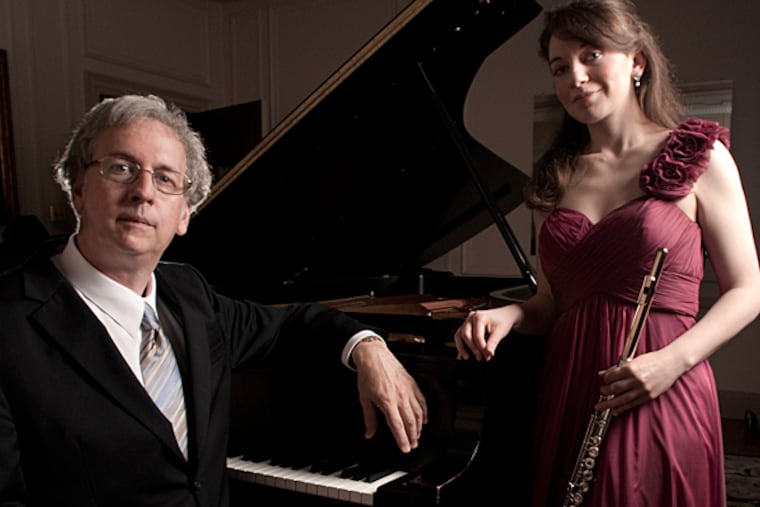Review: Glass half full for Dolce Suono
It was five for ten at the Curtis Institute on Sunday afternoon: Dolce Suono, the flexible chamber ensemble founded at the school 10 years ago by enterprising flutist Mimi Stillman, celebrated the anniversary with music by five generations of composers who studied or taught there - from Samuel Barber through two young grads commissioned by Stillman for the occasion.

It was five for ten at the Curtis Institute on Sunday afternoon: Dolce Suono, the flexible chamber ensemble founded at the school 10 years ago by enterprising flutist Mimi Stillman, celebrated the anniversary with music by five generations of composers who studied or taught there - from Samuel Barber through two young grads commissioned by Stillman for the occasion.
Star faculty member Jennifer Higdon was represented by "Autumn Reflection ," a brief flute/piano work from her student days that provides exactly what the title promises, and "Lullaby" with bass-baritone Thomas Shivone being far too operatic with overly robust tone and indistinct pitch. Barber's "Dover Beach" was a better fit, though his pitch never really grew clearer.
The singer's able partners were named after the piece, the six-year-old Dover Quartet. More than serviceable in the Barber, this phenomenal foursome really showed its stuff in three pieces with Stillman. Two were the premieres: Zhou Tian's "Viaje" a hurtling nine-minute journey inspired by Spanish hero El Cid, and Katarina Kramarchuk's "Rosa's Green Hair," named for the verdigris tresses of the unearthly character whose death launches Isabel Allende's The House of the Spirits. Strings provided a gently swinging rhythm as Stillman's flute flowed and whirled above.
Even better were two movements from Curtis faculty member David Ludwig's Flute Sonata No. 2, here with the piano part rearranged for string quartet. The Dovers and Stillman sprinted through swarms of tightly staggered scales, then relaxed as the strings produced glittering ice crystals of accompaniment underneath Stillman's melody.
For all the Dover's skill, the most remarkable playing came from Stillman's performances with veteran pianist Charles Abramovic and young cellist Gabriel Cabezas in Ned Rorem's Trio, a basic work of the repertoire for this combination. In the opening's Debussy-esque sensuousness, the off-kilter suspensions of the slow movement, the unsettled ache of the Andante, and most of all in the breakneck unison runs and hair-trigger stops and starts of the fast movements, the three were flawlessly in sync - even their trills.
Less spectacular but more substantial, Richard Danielpour's Remembering Neda, in memory of the Iranian woman whose gunshot death during the 2009 postelection protests drew worldwide attention. The three movements - "Lamentation," "Desecration," "Benediction" - featured appropriately anguished dissonances, striking sound effects by hand-plucked piano strings and flutter-tongued flute (Stillman's is the best flutter I've ever heard), ending with flute and cello holding a long, stark interval as unresolved as Neda's unfairly shortened life.